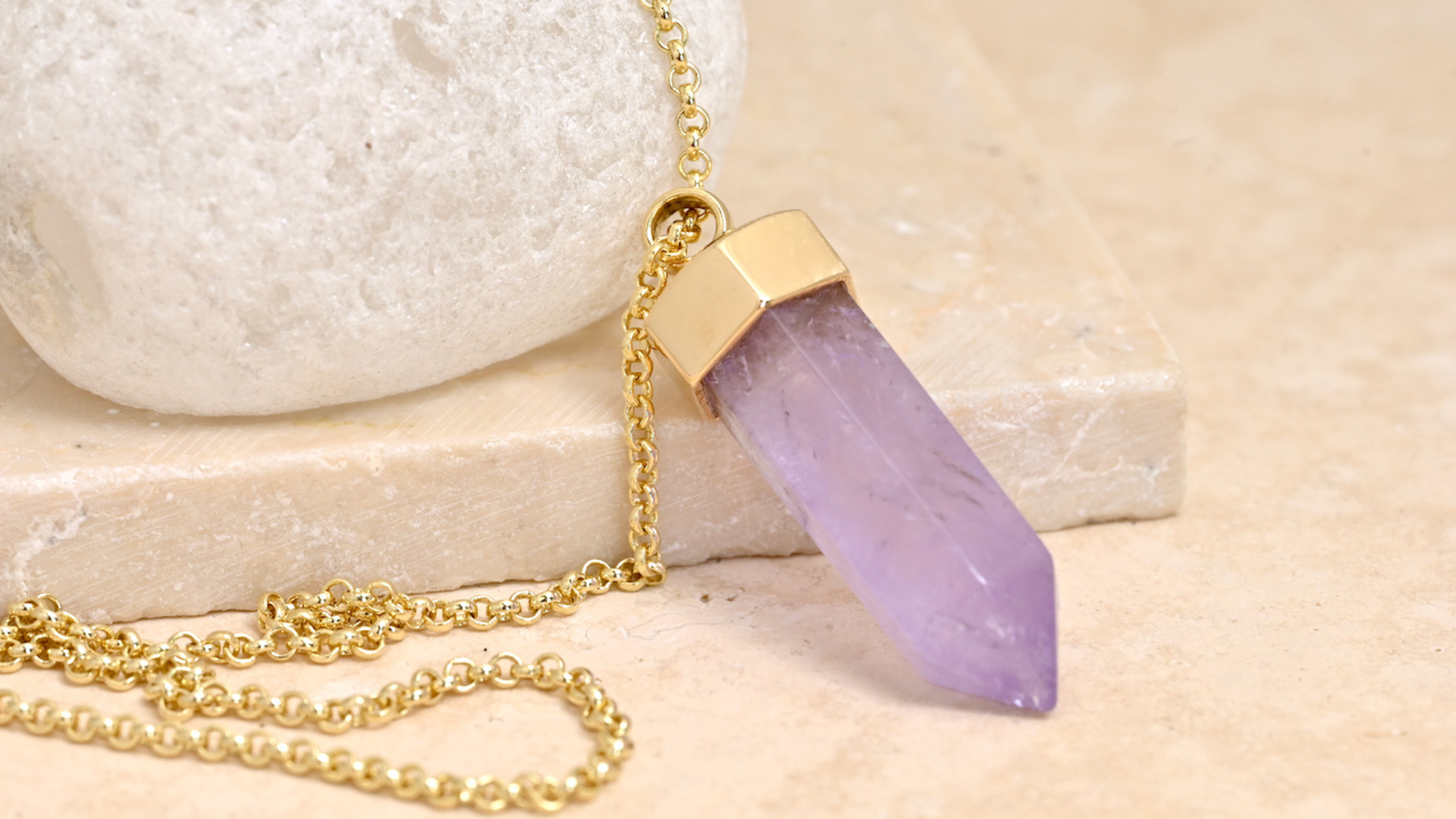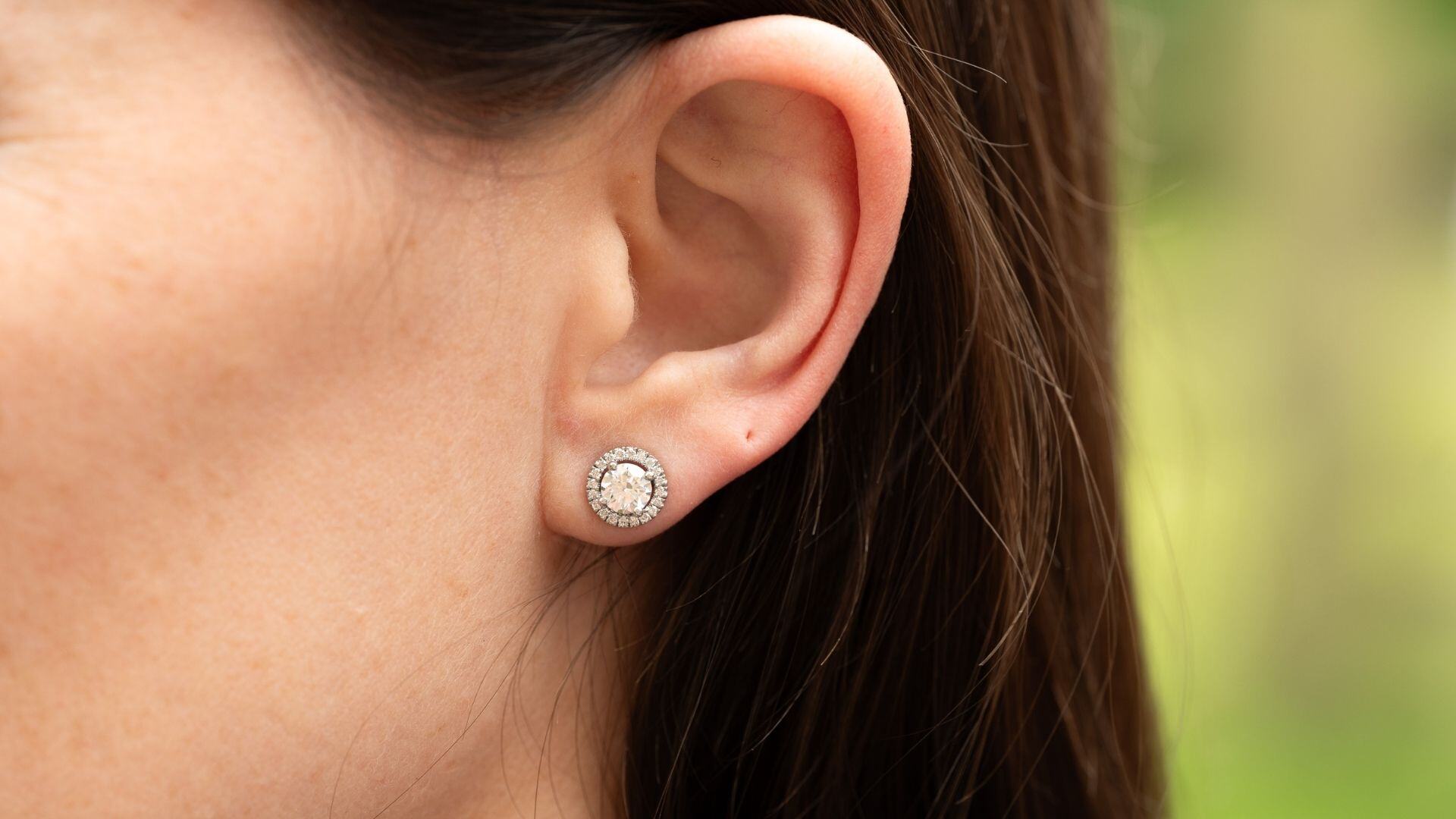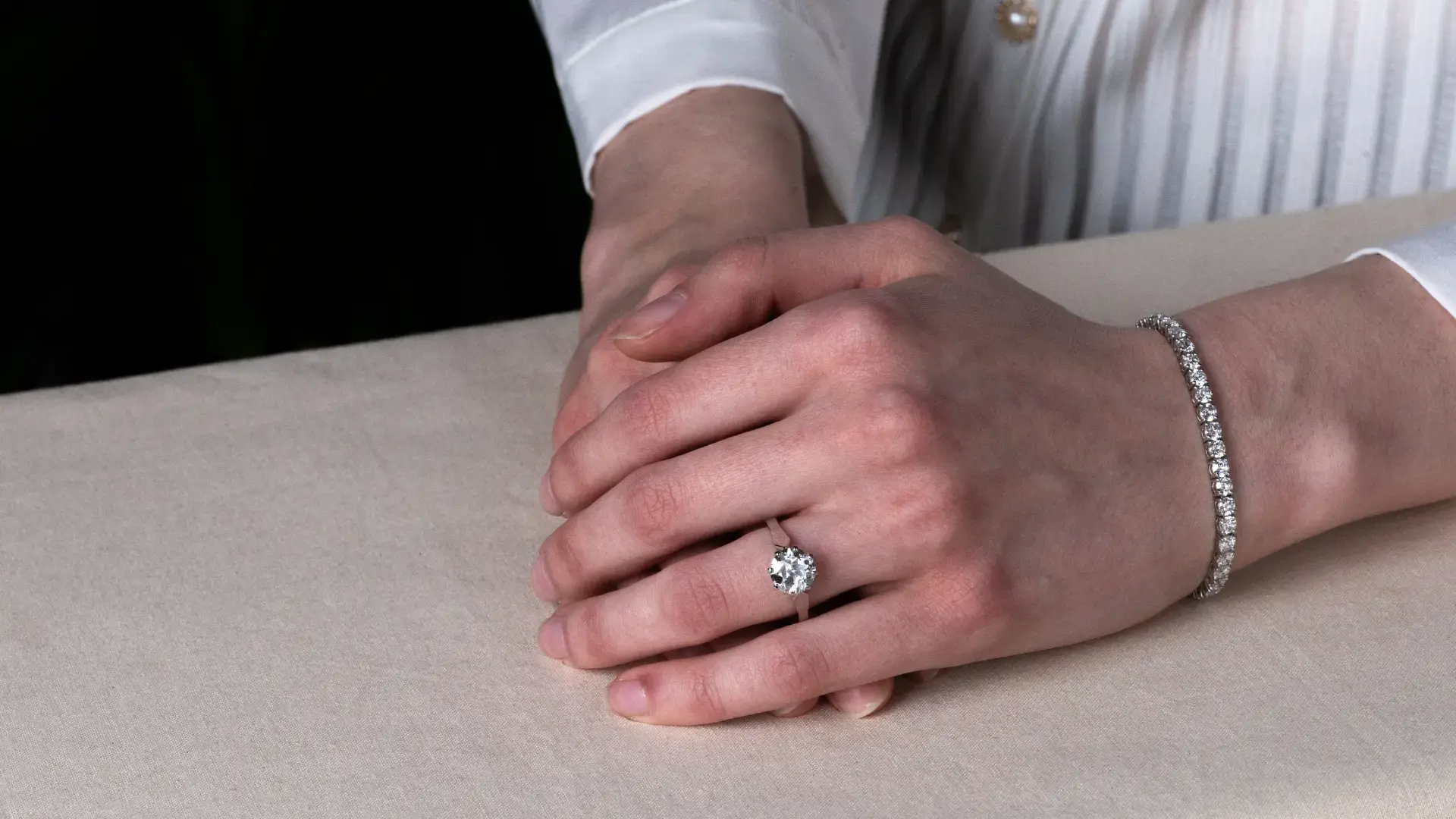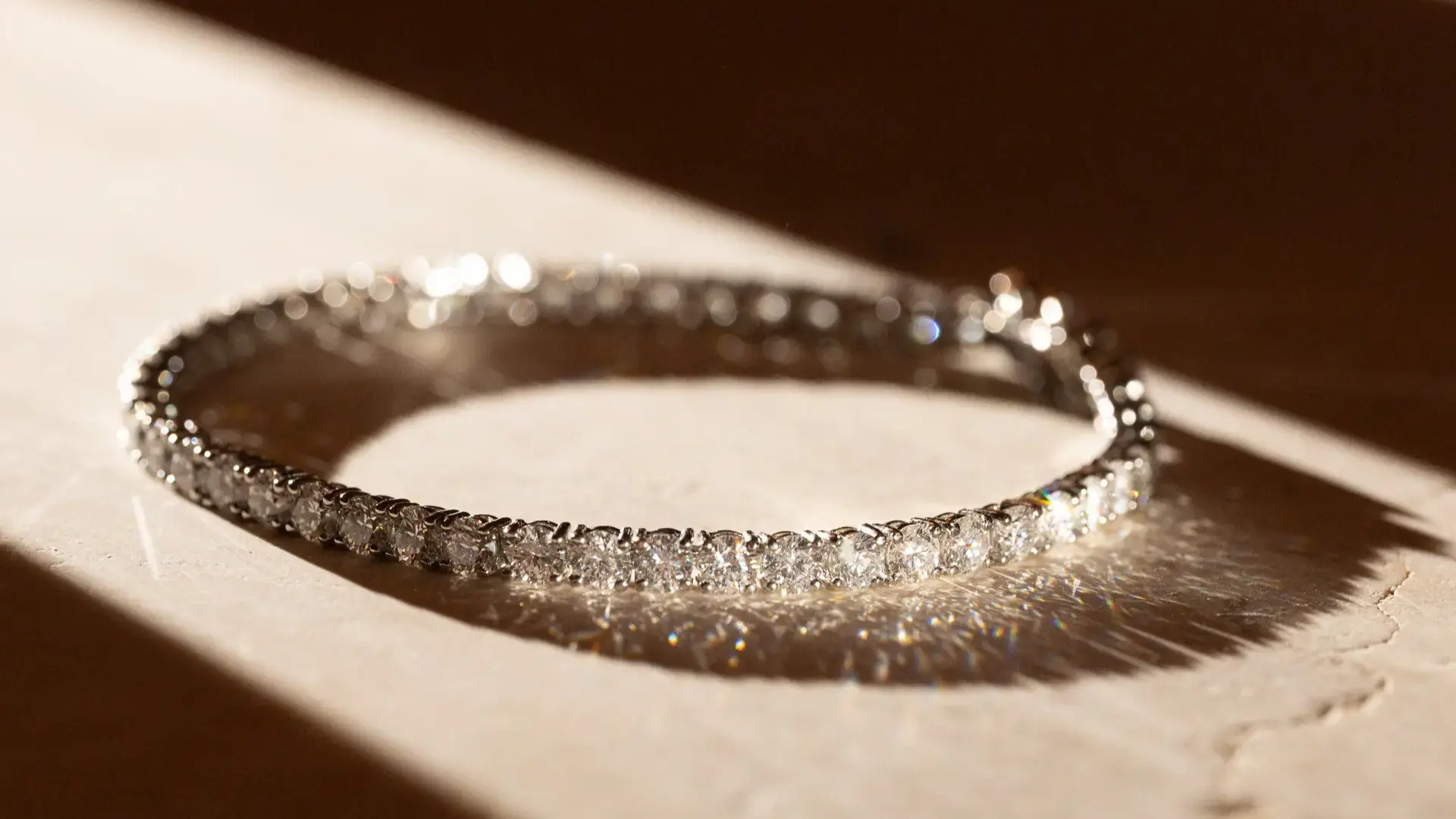Why are Stud Earrings a Cornerstone of any Jewellery Box?
Some of the things we do are so intuitive that if all trace of them were to be lost, they would be re-discovered. A ring adorning a finger or a...
5 min read
Geoffrey Murray : Aug 30, 2024 4:28:35 PM

A small amount of courage leads to a large reward.
First of all, let's go right back in time... There is a remarkable pendant in the archives of the V and A museum. An onyx carved head with a luminous face beaming out of it. It is pierced for wear as a pendant. It is remarkable in its candour and simplicity with big open eyes, a slight smile and delightful detailing in the form of curly hair. There is no date of production ascribed to the piece which was acquired by the museum in 1753, it can be said though that for most of history this was the predominant use of gemstones. They were carved into figurative representations or smooth simple cabochon shapes or used for their symbolism. It was only in the 15th century in the Netherlands that cutters began to apply facets to diamonds. This skill was soon applied to coloured gemstones. Carefully arranged, highly polished facets brought to life the inherent, internal quality of the gem material itself - its colour and translucence. The alchemy that a gemstone performs upon the light that enters its body is unique. Now, after centuries of experimentation we are in the era of the faceted gemstone and we are not nearly as excited about this as we should be!
Turning the dial back a mere century we find a time when the gemstones available to most of society were very restricted. Diamonds had been discovered in South Africa in the late 1800's, they were being faceted and production was increasing. There were some very fine diamonds around in the collections of high jewellers but in the majority of commercially available jewellery they were only available in small sizes and lower qualities. The three other precious gemstones; Sapphire, Ruby and Emerald were very costly and rare and much like diamonds were mostly available in lower quality material. Semi precious garnet, citrine, aquamarine, peridot, turquoise and amethyst as well as the organically occuring pearl and coral were the gems you would most likely see in the window of any given jeweller. Because of the rarity and expense of the fine gemstones, synthetic alternatives were commonplace - coloured glass, synthetic sapphire and composite materials were widely employed and set into beautifully made mountings often with the value of the gold and workmanship significantly higher than the value of the gems or synthetics they held.
Pear shaped Ruby with diamond set in white gold. Season: Winter
A hundred years on things are very different. The four precious gemstones are available in high qualities in a wide variety of shapes and at incremental sizes. You don't have to be unusually wealthy to experience the joy of wearing blood red rubies or deep blue sapphires which have been cut beautifully. Over this time many new sources of semi-precious gems have been found increasing the quality of rough available and unearthing new varieties. The improvements in the quality of cutting along with these new sources of supply mean that at the higher end the distinction between semi precious and precious gemstones has begun to break down. Rare forms of some gems considered 'semi precious' are now very valuable. Bright orange Mandarin Garnets from Namibia, vivid green Demantoid Garnets from Zambia or 'swimming pool blue' Paraiba Tourmalines from Brazil challenge the distinction between 'precious' and 'semi precious'. They have been adopted by designers right at the pinnacle of the craft. If you were to drool through the windows of the Place Vendome in Paris, New Bond Street in Mayfair or 5th Avenue in New York you would see some of these varieties cutting a dash amongst the diamonds.
This brings us to our next Cornerstone - the gemstone pendant. A pendant or necklace is the perfect place to incorporate a coloured gemstone into one's jewellery collection. By the fact of its location on the body it is naturally in conversation with the face and complexion. Necklaces can be quite large in scale as there is plenty of space to work with and as durability is not such an issue, as it is with a ring, more gemstones are available for consideration. How then to make a selection?
One way would be to consider the birthstone of the wearer. If the pendant is to celebrate the birth of a child, then perhaps the birthstone of the child is the appropriate place to start. Whether choosing arbitrarily by birthstone or making a more aesthetic choice, it is worth taking a moment to consider colour. First of all, observe the colours of clothing you or the recipient wear most often. What colours work well? This will be a clue to an appropriate gemstone as it will need to work with the clothing worn around it. Bear in mind though, that we don't always colours that are right for us.
In the early part of the 20th century the work of Swiss artist Johannes Itten lead to the idea of Seasonal Colour Analysis. The categorisation of people (regardless of race or heritage, all skin types have a season) into four different types or seasons of colouring; Winter, Spring, Summer and Autumn. There are quizzes online you can take to assess your own or someone else's season such as this one. The book Colour me Beautiful by Carole Jackon, published in 1980 is now a little dated but is very instructive. Loosely speaking Winter and Summer are cool with blue undertones while Autumn and Spring are warm, based on yellow or golden undertones. From this cascade down a whole palette of colours appropriate for each season with quite subtle further sub divisions within each. It is possible to not be swamped in detail and with a basic eye for spotting someone's season, considering mostly their skin tone but also hair colour and eye colour it is possible to be reasonably confident about what gems will suit them.

Pear shaped Tanzanite in white gold with a 0.50ct diamond and Pearls. Season: Winter.
Some gemstones will always be a single season. For instance it is hard to see Tanzanite with its strong saturated blue and purple tones in any other season than Winter. Sapphire on the other hand comes in a wide variety of colours. A saturated Golden sapphire would suit an Autumn person while a light bright lemon yellow would suit a Summer. A deep saturated Blue would suit a Winter while a light, bright Lavender or Apricot would suit a Spring.
When it comes to style and shape the best cut for a pendant is a pear shape. It suggests vertical movement and interacts nicely with the natural V shape a chain makes with a pendant suspended from it. It works well with a row of diamonds above to accentuate the drop.

Pear shaped Heliodore Beryl with diamonds in Yellow & White gold Season: Spring.
A round shape draws the attention in towards itself, it is powerful and singular and particularly above the heart centre where it has an amuletic quality.
A round Emerald with Diamonds set in Platinum. Seasons: Winter, Summer.
An engraving on a piece here would be very meaningful, worn close to the heart. A lot of fun can be had with a pendant as it is inherently more 2 dimensional and is viewed from a much narrower aspect than a ring which is a more 3 dimensional object. Swirls of pave set diamonds can give movement and deeper stones, richer in colour by their volume, that are too top heavy for a ring, can find their home on the chest. Here is a recent lot at Sotheby's, a piece by Van Cleef and Arpels, it is a nice example of the fun that can be had with pave setting and natural forms around a central Sapphire. Here is a nice idea for using up lots of assorted gemstones - the form of an oversized, rounded cross being the ideal receptacle for a plethora of gemstones - perhaps these were unset from old, unworn jewellery. They have been beautifully arranged.
A Georgian style Emerald and Diamond Cross in 18ct gold and Silver. Seasons: Winter, Summer, Spring.
Welcome to the era of the faceted Gemstone - long may it last!

Some of the things we do are so intuitive that if all trace of them were to be lost, they would be re-discovered. A ring adorning a finger or a...

It’s not about how you wear your clothes but how you accessorise them. Accessories can bring an air of refinement that transforms the ordinary into...

The diamond line bracelet became known as the tennis bracelet after American star Chris Evert took to wearing one on court. The most famous chapter...